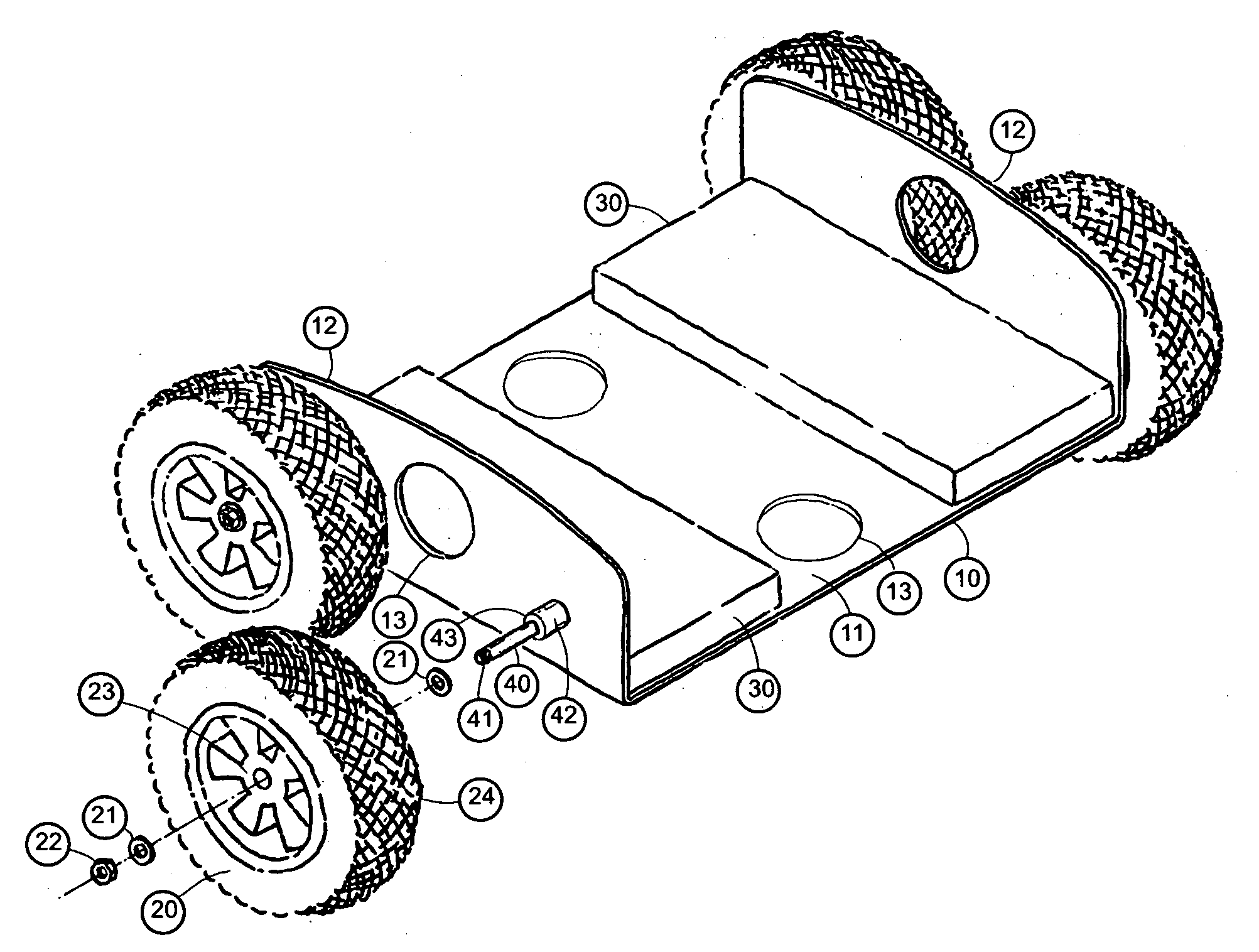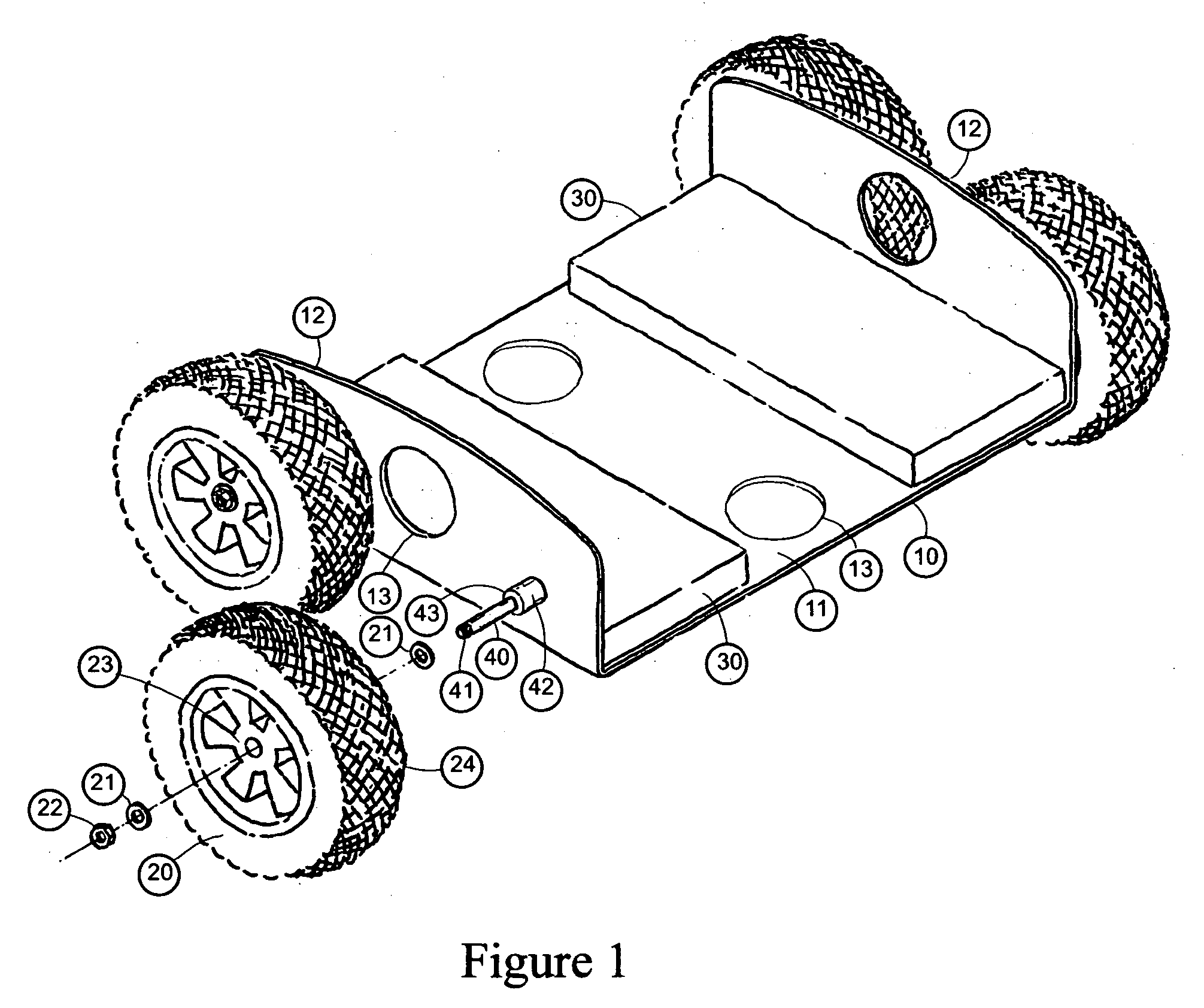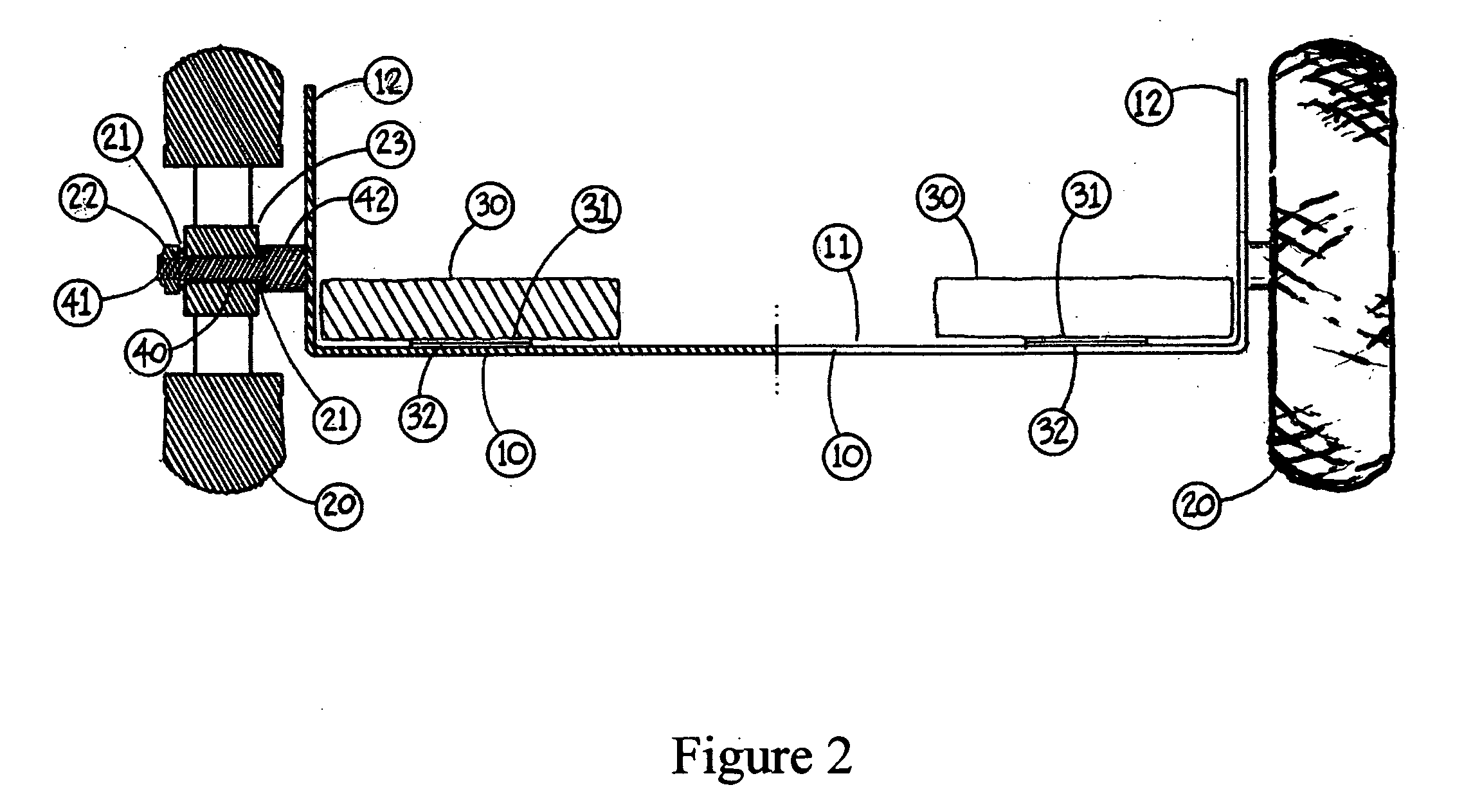While the conventional creepers are suited for conditions found in many workshops and on concrete driveways, they are impractical on uneven and soft surfaces commonly found in a crawlspace under a building and under mobile homes, for example.
Particularly, the size of the platform is insufficient for traversing over, under and around obstructions such as rocks, foundation walls, plumbing pipes, and heating ducts commonly found thereon.
Also, the wheels of prior art creepers are ineffective for support on soft and uneven terrain including loose soil and rocks.
Another problem with conventional crawler transports are that they presume that the operating person will be
lying on their back and using their legs and feet to facilitate movement which unnecessarily restricts the operating person's
visibility while moving in a forward direction.
Another problem with conventional crawler transports are the wheel types do not provide adequate functionality over rough terrain.
Another problem with conventional crawler transporters are they depend on the operating person to be
lying on the apparatus, on their back, placed directly on the rough terrain surface and pushing themselves with their legs to cause the apparatus to slide.
The creeper of Simpson has significant disadvantages in that movement requires a user to be lying on their back making
visibility in the direction of travel difficult.
The main problem with this is movement would be difficult in low vertical clearance spaces.
Further, the creeper of Simpson has a large physical size and a contoured shape that restricts maneuverability movement through a low clearance small space with obstructions and the contoured shape limits a user to only be lying on it on their back which results in restricted mobility of the device.
Additionally, it's physical size and shape inhibits mounting and dismounting in constricted areas.
The creeper of Black has significant disadvantages in that movement requires the user to be lying on their back making
visibility in the direction of travel difficult, and the creeper has limited turning capability, if any, particularly on hard, flat surfaces.
Also, traversing over objects other than moderately uneven terrain would not be possible.
Moreover, the long dimension of the creeper restricts maneuverability and significantly limits turning past or over obstacles.
These creepers are ineffective in that they need excessive ground clearance; they employ narrow wheels which have little float or traction in soft turf; they require padding for operator protection from sharp structural protrusions; they are useful only on hard or smooth surfaces; and / or they are not effective in hard or rocky soil.
While these devices may be suitable for the particular purpose to which they address, they are not suitable for assisting a person in moving through a small low clearance space with rough terrain such as the crawl space beneath a building.
The main problem with conventional crawler transports are their physical size and / or contoured shapes impair movement through a small space and impairs movement of an operating person's arms and legs when used in a manner other than lying on their back which results in restricted mobility of the device.
Additionally, their physical size and / or shape inhibits mounting and dismounting in constricted areas.
Another problem is that they presume that the operating person will be lying on their back and using their legs and feet to facilitate movement which unnecessarily restricts the operating persons visibility while moving in a forward direction.
Also, another problem is the wheel types do not provide adequate functionality over rough terrain.
Another problem with conventional crawler transporters is that they depend on the operating person to be lying on their back on the apparatus placed directly on the rough terrain surface and pushing themselves with their legs to cause the apparatus to slide.
 Login to View More
Login to View More  Login to View More
Login to View More 


